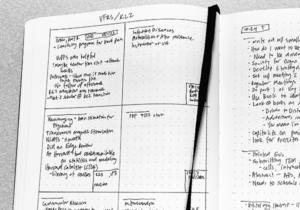Helping When You Have No Answers

One sign of a caring community is that individuals regularly reach out to each other for help. In many circumstances, we can best help by sharing our knowledge or suggesting solutions. Questions ranging from “What is the proper statistical analysis?” to “How can I improve my chances for an interview with this department?” allow us to give advice when a colleague needs help to solve a problem.
But how can we help when someone comes to us with a problem that cannot be solved – at least not with simple advice? Such situations occur when a friend or colleague is experiencing powerful emotions such as frustration, fear or sadness, or when coping with a difficult loss. When someone opens up to you in this way, you may not know what to say. You want to help, but this is a dilemma that can’t be readily fixed.
It can be a helpless feeling – not knowing what to say or how to fix it – and you may be tempted to search for some bit of advice to cheer the person up, such as reminding her of all that is going well or otherwise finding a silver lining. Most often, however, your efforts fall short, as it is quite difficult to talk someone into feeling better. Moreover, when we try to “fix” our friends’ emotional state, we can inadvertently place an extra burden on them to try to feel better for our sake, or to fake it, because we are uncomfortable sitting with the feelings that are troubling them.
So how can we help when we have no solutions? The answer lies in empathy.
To provide empathy is to accompany another individual in whatever he or she is feeling: to switch from a mindset of problem-solving to one of seeking to understand another person’s experience. So when someone shares, for example, that he is sad and frustrated that his grant didn’t get funded, or that he is feeling distraught after having yet another experiment fail, rather than search for answers, you may say something like, “That sounds like a difficult place to be. I’m here for you.” If we feel somewhat helpless in being unable to make things better for our friends, then we are likely experiencing a small dose of what they are carrying. And if we are willing to sit with them in that experience, then they are not alone.
It might sound easy: simply sitting with someone rather than trying to fix their problem, but truly experiencing another person’s distress is pretty hard. It requires us to withhold judgment about whether our colleague’s emotional state makes sense. If they are experiencing the feeling, then it is real. A scientist doesn’t reject data that is unwanted or unexpected. Rather, she explores why the data look that way. Similarly, an empathetic friend doesn’t disallow someone else’s emotions just because they’re unpleasant. She instead seeks to learn what it’s like to feel them. In this regard, empathy emerges when we let our natural curiosity about the world extend to another person’s subjective experience. We are most empathetic when we genuinely want to know how it feels to be the person sitting beside us. And that can be the best help anyone can offer.
More Resources
Emotional Connecting While Social Distancing
The Thrills and Perils of Living on the Edge – Anxiety Edition
Staying Mentally Well in Academia is a Balancing Act
Home Page ImageSource: https://charterforcompassion.org/empathy-is-essential-the-soft-skill-that-engages-the-whole-brain






0 Comments